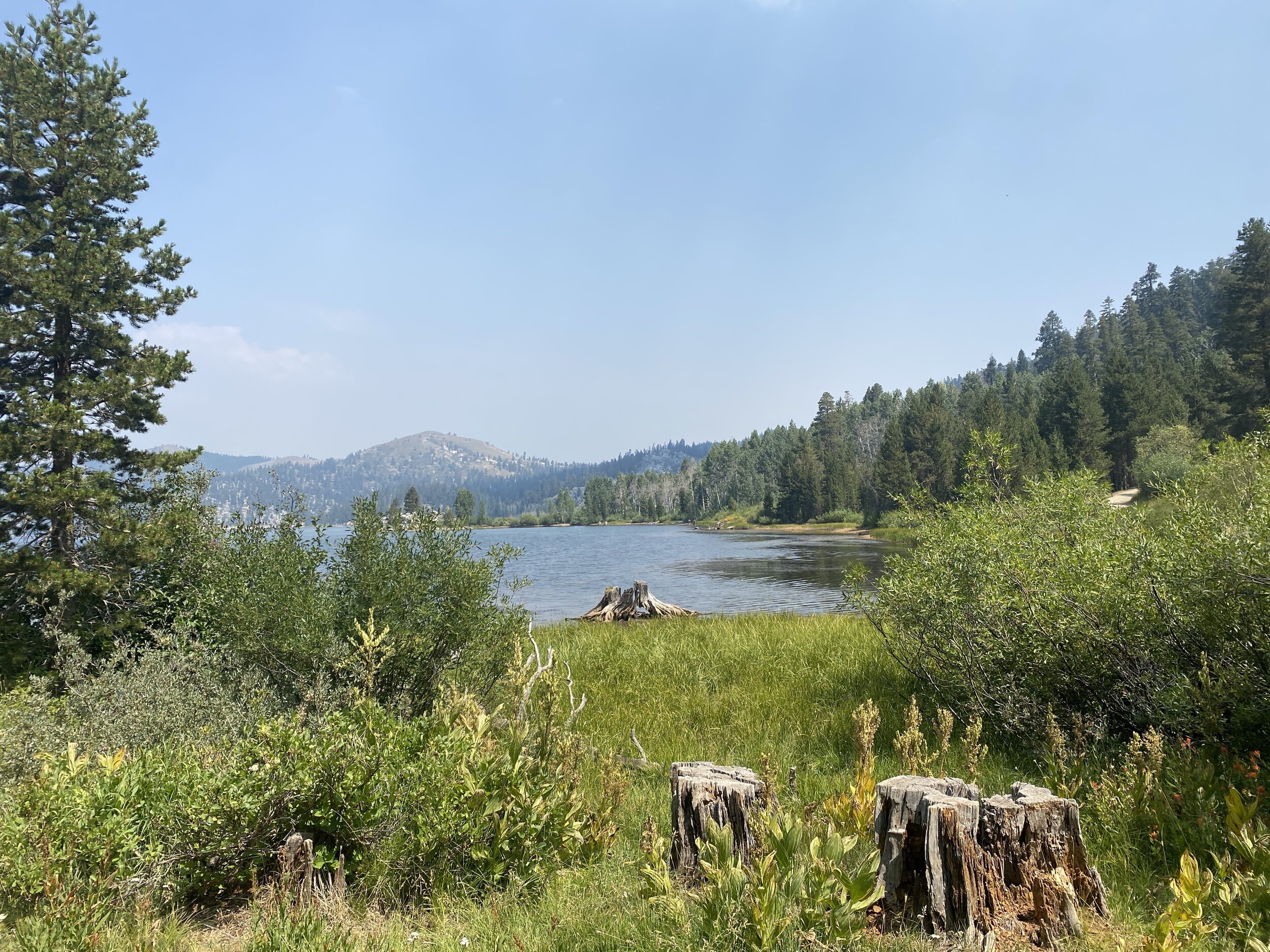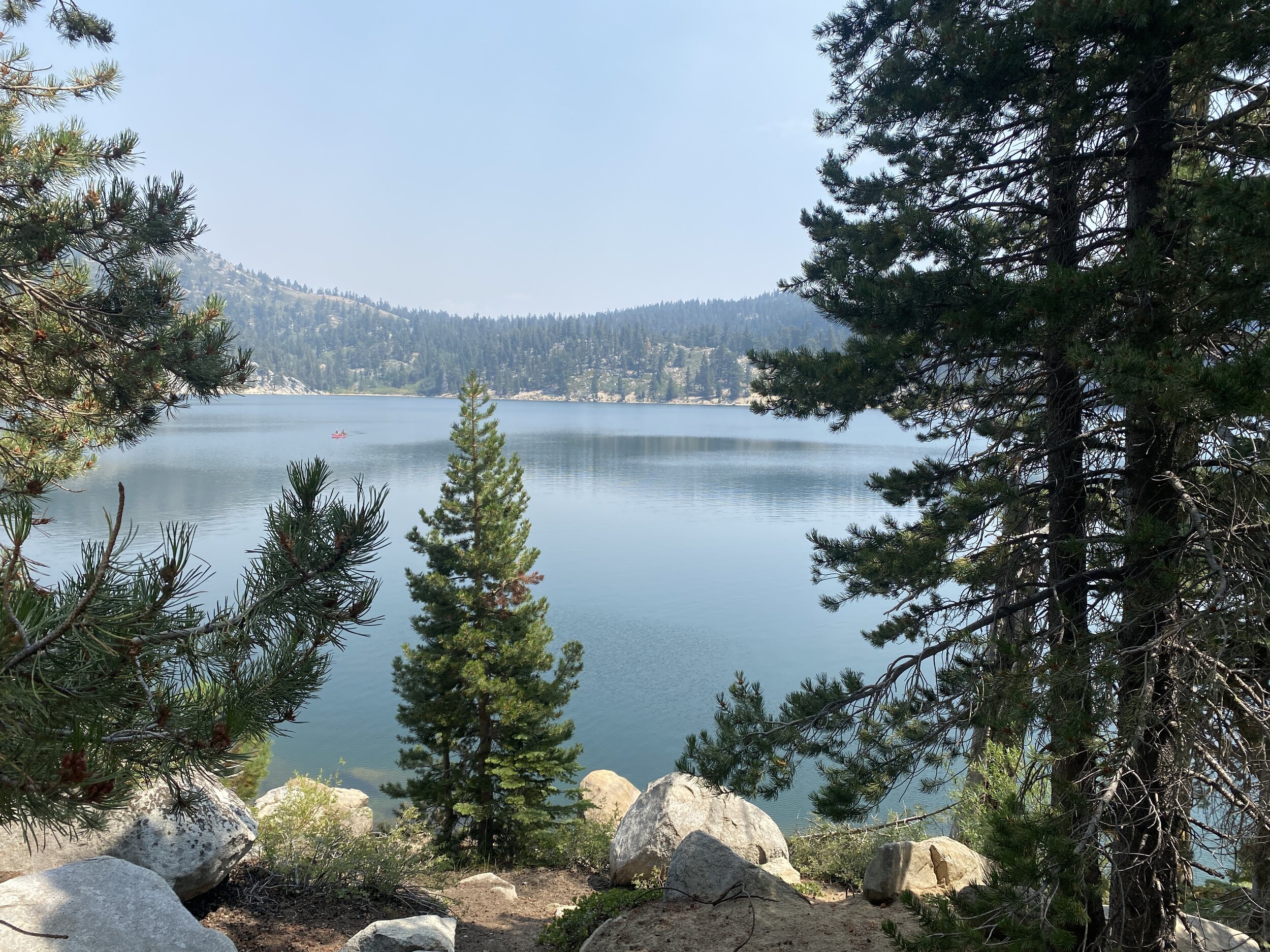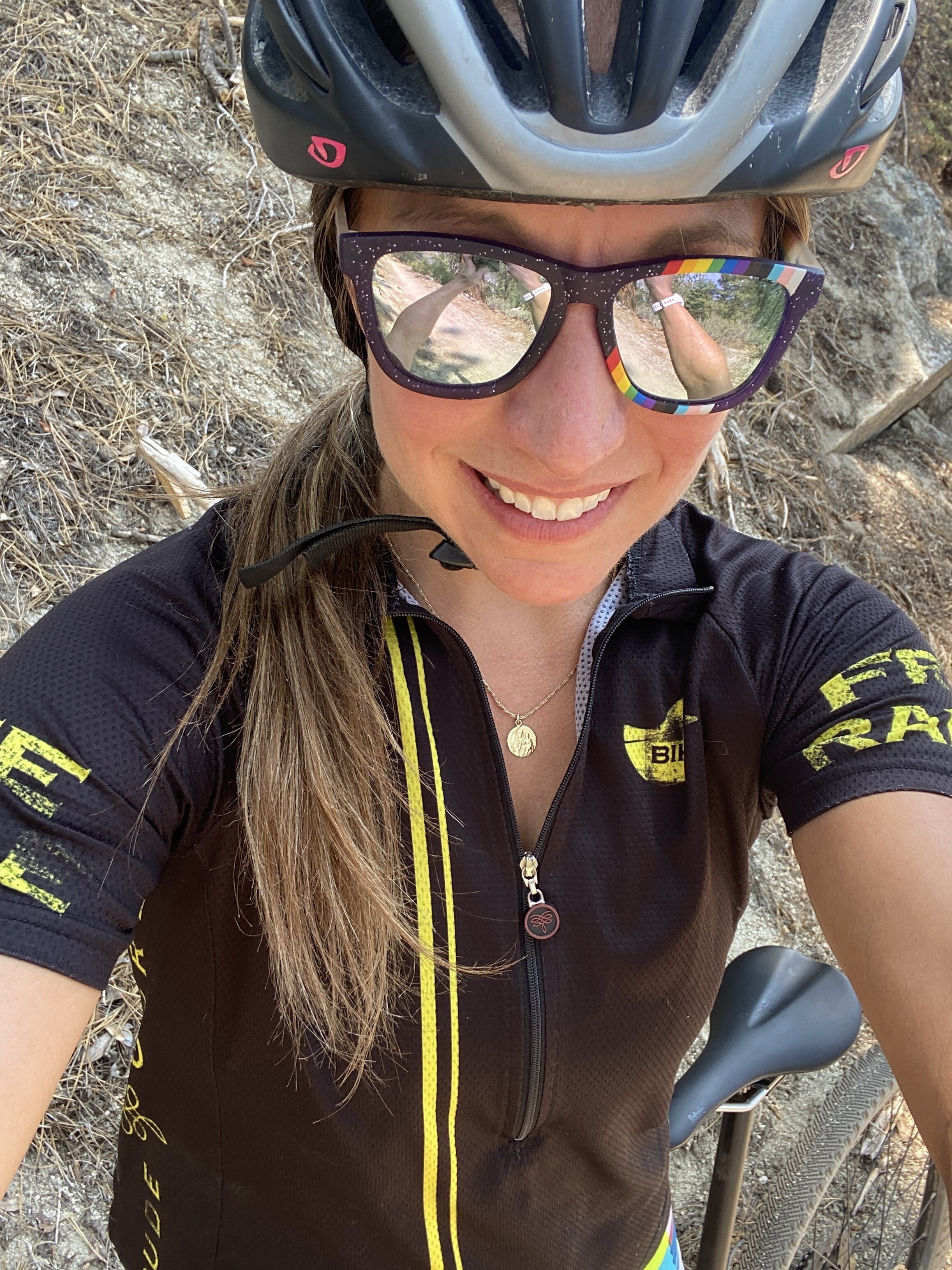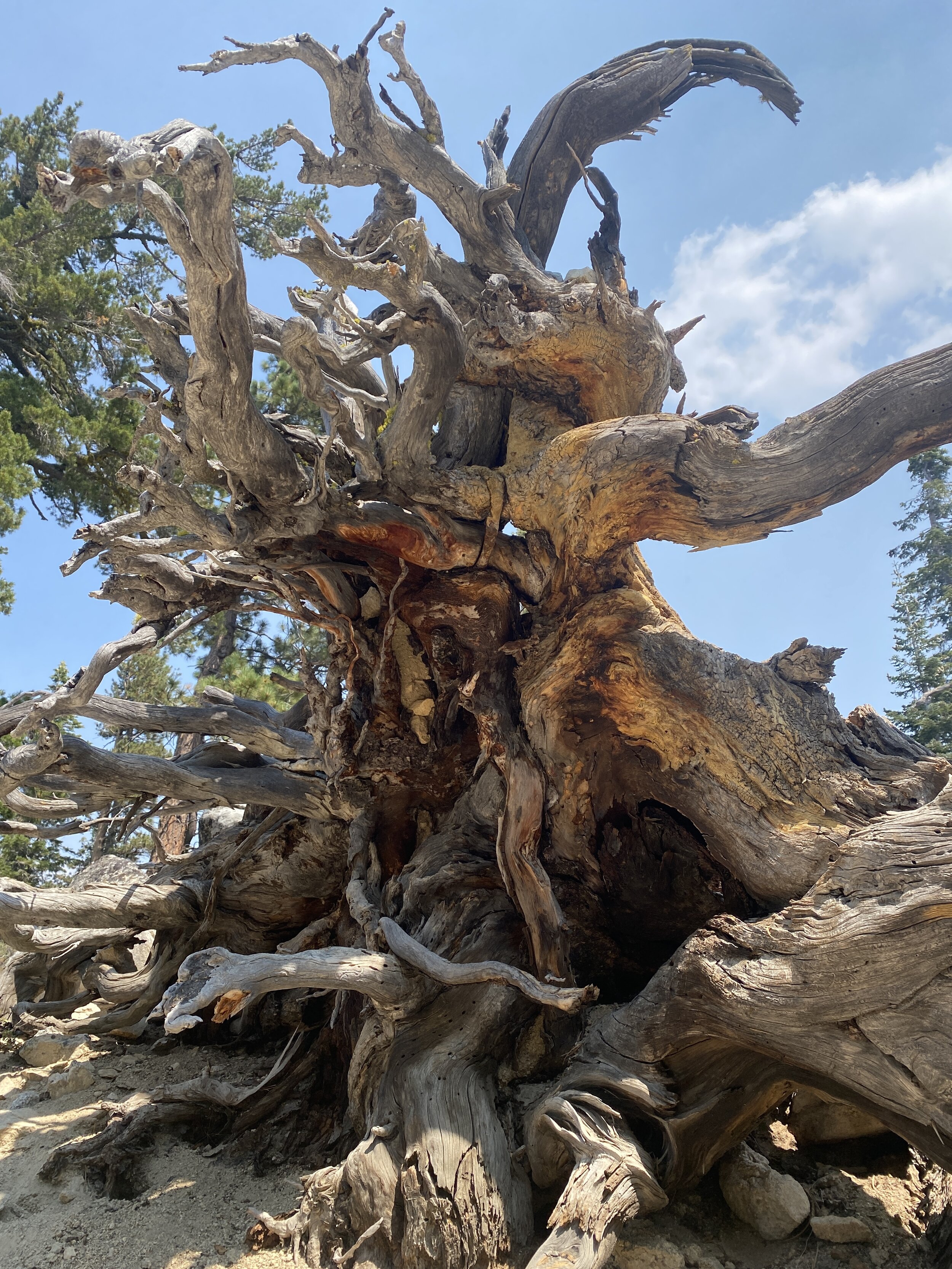How I got to the starting line of an ultramarathon—my first 50k— wasn’t exactly a straight line.
In a lot of ways it reminds me of how I became an athlete to begin with— through happenstance that included an eating disorder, getting over that, freelancing for local newsweeklies and then a lot of Master’s degrees. It was a journey one of my thesis advisors asked, after reading my thesis, which turned into my first book: “Do you think this would be in the self-help section of the bookstore? Like, as a how-to for other people who want to get into long-distance running?”
“Good God, I hope not,” I said, because in my adult life I’ve come to believe that if you want to do something, you should really just take the plunge and do it, and quit miring yourself in doubt and “obstacles” that will probably turn out not to be obstacles anyway.
I realize that is not at all how most responsible, adult people do things. It’s important to plan and to prepare. Instead, I hope for the best because, in the very least, I know that at the end of the day I can say that I did my best to reach my goals and dreams.
Even in failing—if I have failed— I, at least, lived them.
So that’s how I found myself on the shore of Spooner Lake with about 260 other distance runners on a smoky and red-sun Sunday morning.
Backstory: I’d been riding my gravel bike in the area the day before and noticed the trail marker signs. I’ve always loved North Canyon Road, the Flume Trail and Tunnel Road for both running and cycling, and so I googled the event the second I got back home, still dusty from having ridden the gravel bike.
The search results announced that the Marlette Lake 50K was happening the next day and if I wanted to do it, I had about 30 minutes to make up my mind, pull out my credit card and pay the registration fee. Otherwise, this would be another opportunity lost.
The angel on my left shoulder said: “Doo eeet, dooo eeet, doo eet,” and listed various reasons like: the one you signed up for was already canceled, you don’t have to pay for a hotel, it’s local, you know the route, you know the bail-out option if it’s absolutely unbearable by about mile 20, you can run down to that cafe, grab a beer and a shuttle back to the car. And then that angel shouted: PLUS ITS GOING TO BE AMAZING!!!
The angel on my right shoulder (I’m going Old Testament style, so there are no devils per se in this version of my psyche, just two idealized versions of me) said: “You haven’t put in enough miles to do this without getting hurt. Your longest recent run to date is 16 miles and that felt like dying. This race is 31.2 miles, which will feel like death warmed over, and that is much worse than dying. You also don’t have a viable way to carry the kind of water you’ll need to make it through without severe dehydration. Oh, and you still have one antibiotic pill to take from the massive bladder infection you contracted earlier in the week from… yup you guessed it!!! Severe dehydration! No is probably the safest option.”
Yet, the voice from my left shoulder was louder.
How long has it been since I did something for the sheer fun of it? And trust me, going into a race without sufficient training had to exist at the level of fun— with the expectation I’d get nothing else other than a participation medal, a slap on the back, and some sort of tendonitis as awards for my effort. Something called to me, though, and the more I thought about it, the more I wanted to do it.
Maybe I wanted to prove to myself that I could. I need to know that, as Glennon Doyle says, I can still do hard things. This is important because I very vocally and publically gave up competition when I was hired at my current job in 2018 in an attempt to become “an adult.” Three years later, I’m not sure that happened as much as I made myself feel uninspired by my own life. Granted, had 2020 not happened—which brought the certification training to become a Soul-Based Coach and my crazy journey on rollerskates— I don’t think I would have noticed how ho-hum I’d allowed myself to become.
So, this 50k race offered me something new: on my own two feet without the proper preparation or really any real hope of finishing, was I mentally tough enough to carry myself all those miles? Can I do hard things?
That was the question in my mind when the air horn sounded and I took off with a hundred or so other runners who would be on this journey with me into the narrow trails through the Tahoe Wilderness.
Not as Planned
I am not a planner.
Or, I mean, I am, but somehow the plans I make tend to melt as reality approaches and I’ve learned how to roll with the punches. Here’s an example of what I mean: I have a 20-week ultramarathon training plan I found online, printed out and keep on my desk. I do the workouts as prescribed, writing notes about my pace and any other details in the margins of the page. The program intended for me to race in September, which was the original plan until the race I signed up for was canceled.
OK.
Change of plan.
I was debating on signing up for the Mount Tampalais Ultra, which happens in November, which would have enabled me to duplicate training weeks and build more miles on my legs (and hopefully lessen the likelihood of injury.) I didn’t pull the trigger because the race would have also required a hotel, and etc., etc. and in addition to believing that I am a planner, I am also a person who hates to spend money on a lot of etc. not because I am frugal, but because I don’t have a lot of money to spend.
Images from the bike ride the day before when I saw the directional signs for the Marlette 50k and thought, “Hmmmm”
So enter the Marlette Lake 50k at Week 7 of my training plan, which featured an easy 18 miler for my Sunday run. I weighed that in the balance against what it would be like to run an Ultra-marathon, which at that point seemed like a technicolor rainbow with unicorns and stardust.
“What’s 13 more miles with a few extra thousand of elevation gain?” I asked myself as I signed up for the race the night before, reasoning that in addition to saving myself the anxiety of waiting for a race until November, I was potentially saving myself hundreds of dollars.
(The notation in my training plan for the 18-miler on Sunday is something like “OOOOMMMMGGGG!!!!!”)
Immediately, I went through a race-checklist in my mind:
Shoes: check albeit road shoes, so I’d have to watch out for rocks.
Some way to carry water: a silly belt with a floppy plastic bottle I do not like. It would have to do.
Outfit: highlighter colored lulu shorts. They would find me if I died in the forest, either because I was mauled by a bear or I keeled over from all the miles.
Body glide: Nope. Chafe City was approximately 31.2 miles away.
Sunscreen: the kind that melts off after an hour but maybe it’s the thought that counts.
Food to carry with me: I dug around in the pantry and found a single pack of HoneyStinger chews that still featured Lance Armstrong’s picture on them. (Do those things ever expire?)
Then the “nonessentials”, which included my cell phone, AfterShokz Bluetooth headphones and sunglasses.
I digress. This is what I mean about planning: I studied the course map the night before as I bounced around the house, gathering all these various pieces and parts of myself together in preparation for this last-minute Ultra I just jumped into (OMG!) And somehow, I told myself that we would run the Flume side of the course first, so I would have time to settle into a place and to enjoy beautiful views of Lake Tahoe before climbing to the Tahoe Rim Trail (TRT) for some hilly and probably techncal singletrack.
That is not at all how the race was run. In fact, we ran it in the opposite direction.
In other words, the mental map I had painted didn’t at all prepare me for the single track of constant climbing we faced right out of the gate. One girl ran in the lead pack in front of me; I paced behind a tall, lean runner with a rad handlebar mustache, figuring that if anyone knew how to run an ultra, somebody like that sure would.
After a couple of miles, though, we spread out and I was basically alone on the undulating single track, sometimes catching glimpses of another runner through the forest, sometimes feeling as though I was the only human alive on that wood fire-scented morning.
Just the Details
If you’re reading this for race recon, I can say with 100% authority that the Marlette Lake 50k is not a flat course. If you do not like running up hills, do not run this race. Granted, I’d mentally prepared myself to run in the other direction, so maybe I’m not the best source of intel on this. On the upside, the terrain is absolutely beautiful: forest-scape, sometimes with views.
Early, I learned that it’s OK to walk in an ultra. I actually used some of the steeper hills to power walk, taking the opportunity to drink out of my floppy water flask, because I haven’t mastered how to do that while I’m running. Somewhere in those early miles a male runner—whom I’d passed on the uphills and who passed me, on the downs—said when it was clear he was pulling ahead of me: “I’m sure you’ll catch me again eventually.”
Up and down, constantly. That was the singletrack trail that led to aid station 1 at about mile 7 where I stopped to refill my floppy bottle. The woman who would win the race passed me there—she didn’t stop— and I told myself it didn’t matter. I was only in this race to finish.
The descent down to Hobart Lake was a doozy. I typically enjoy downhills, but not in sand and not when, if you fall down, you might never stop rolling.
Anyway, despite my griping, the environment was still remarkably beautiful. (I was also super excited that we ran this way first, because friends and family were sending me texts, sending me positive vibes for the race. Seeing their names pop up on my Garmin restored my confidence that I could do this… and that other people believed I could, too.)
The second aid station arrived shortly after at mile 12.7. This is when I began my “race meal” of potato chips. I have a long relationship with ye olde potato when I learned on ultra-endurance cycling races and in Ironman that one of the few things my stomach can always handle are salty chips. Anyway, while scarfing a handful of the good salty ones, another woman caught me, filled her bottle, and started running up the hill like a gazelle.
I tried my best to eat the chips as fast as I could, but I’d have to pause a few times on the climb to take extra sips of water to clear the chips! I honestly felt like this part of the race was the most mentally challenging. I was starting to feel the miles in my legs (and I wasn’t even halfway!!) and so I worried about the possibility that I wouldn’t finish.
This part of the race was also all (basically) uphill, but the kind that looks deceptively flat. If I’d been on a bike, I would have wondered if I had a brake dragging. Since it was just my body, I didn’t have anything else to blame but myself for moving along so slowly.
The next aid station, at mile 14 or so, seemed like it took me forever to reach. Once again, I grabbed a handful of potato chips and more water. The table also offered electrolyte drink, chocolate chip cookies and pretzels. Maybe it would have been smart for me to take a little sugar (although sugar rarely sits well with me), so after my handful of salt and carbs, I started the climb up Marlette Peak.
At this point, the race is still all on a single-track trail and it includes a lot of climbing. The next part gets a bit blurry for me in terms of mileage because my Garmin had “issues.” I can say at a certain point, you reach the “top” of the trail and then there are a series of somewhat steep switchbacks that eventually take you to Tunnel Road.
At a certain point, I paused, not seeing the course marker in front of me, and my Garmin went into this weird “I’M PANICKING AND CALLING YOUR MOTHER BECAUSE IT FEELS LIKE YOU FELL” mode, which I disabled because even though I was momentarily confused, I was fine. Anyway, that was at about 18.8 miles and the next aid station (Tunnel Road) was at 19.5— lost miles, apparently.
From 19.5 to 25.2, though, the race turned smooth sailing. That’s when we reached the Flume Trail, which is this high-elevation shelf that overlooks Lake Tahoe. Even though I was physically beat and pretty tired, running on something relatively flat and not-at-all technical felt like running on the red carpet. The mile markers that line the trail acted as a nice countdown that carried me, almost like a cloud, to Marlette Lake.
The excitement of having “only” six miles left was certainly palpable… almost as much as the heat and humidity. I stood in the shade of the aid station on the shores of Marlette Lake, and opted not to eat anything else because I knew that eating in the heat and running are two things that turn me into a human pinata (and no, not the kind you want to attend a kid’s birthday party!)
This would matter because once again my mis-planning came into play for the last part of the race. Since I’d been riding in the area the day before, I just assumed that we would run up North Canyon Road and take that back to the finish line. When the race markers directed us off to the single track intended to keep foot traffic separate from bike traffic, it made complete sense even though my heart did that down-beat of a some sad pop song.
Doo-wop, boom: “Sigh. More climbing.”
There is no shame in walking, I told myself when I started riding a gravel bike.
I like my face, and I don’t want to break it.
In this race, I learned there is no shame in walking in an ultra-marathon, either.
Sometimes a person can walk up a hill faster than they can run it. And sometimes, you’ve just got to be honest with yourself about what you can do, given the distance and conditions around you.
Anyway, the final five(ish) miles of the race are downhill, which sounds great, but is also somewhat brutal. I paused at an aid station on the descent where a volunteer informed me I’d made the top ten and was the third woman to pass her so far.
“Holy shit! How did that happen?” I asked as I began running again.
“Keep going!” she called after me.
I had assumed I was running basically solo for the entire race because I was so far behind everyone else. It had never entered my mind that I would not only complete an ultramarathon I hadn’t entirely trained for, but make the podium, too.
I knew, however, that what a volunteer tells you is not the official result. I ran as fast as I could down that hill, skipping the final aid station that was two miles from the finish. I remembered a cycling mantra from long ago: “You can do anything for two miles.”
I told myself that I could run the final two miles and not stop, no matter how hot or uncomfortable it was. Stopping would only prolong the discomfort and allow someone to catch up with me. Volunteers and spectators lined the path and cheered me on as I rounded the final turn to the finish. That was the moment when I knew something unreal had happened:
“And here is our bronze finisher, Rebecca Eckland from Reno!”
I think I might have gotten some cheers for representing our local running community. Five hours and thirty five minutes later, I arrived back where I started covered in sweat, dirt, salt and a lot of pride in the knowledge that yes, I can still do hard things.
Lessons Learned
I have always given my victories to other people, but I manage to hold the full responsibility of failures —regardless of whether or not they are mine— to myself.
What I loved so much about this journey over 50k (31.2 miles) is that it was mine. I had to run it, and I did. I didn’t run a perfect race. But, whatever I did, it was mine.
My metaphor for my life journey has been very simple: I am climbing a mountain. This race showed me that even in smoke and heat, even when it is not planned, even when I am alone, I can still put one foot in front of the other. I can finish. Maybe in a good place, maybe not. But I will always do what needs to be done to get where I want to go.
This race also showed me that there are people in the world— a precious few—who cheer for me. Now, more than ever, I am grateful for them!
Beyond the podium, though, this race told me what I have needed to experience for myself: I have the power to create the life I want. All it takes is the courage to make that first step, and then to continue on that trail for as long as it takes.
I can do it.
All it takes is the bravery to take that first tentative step.









